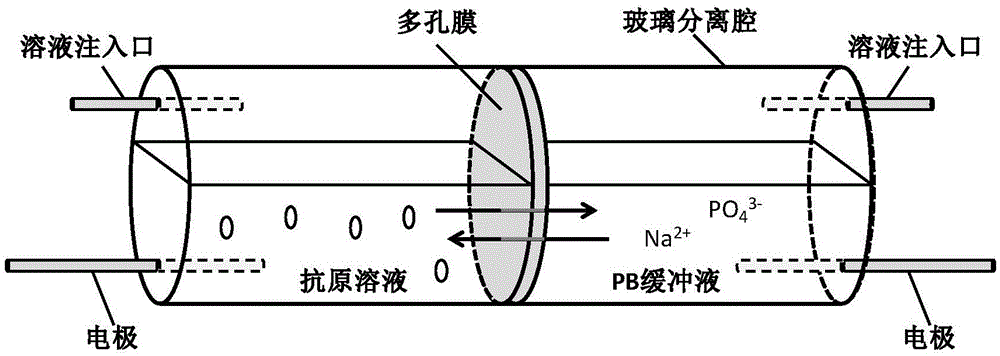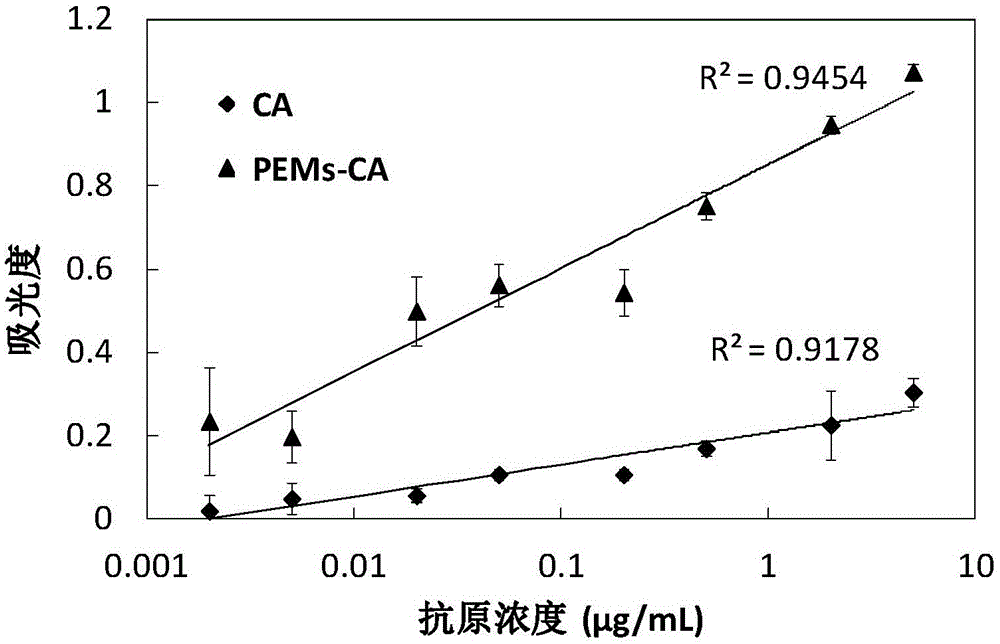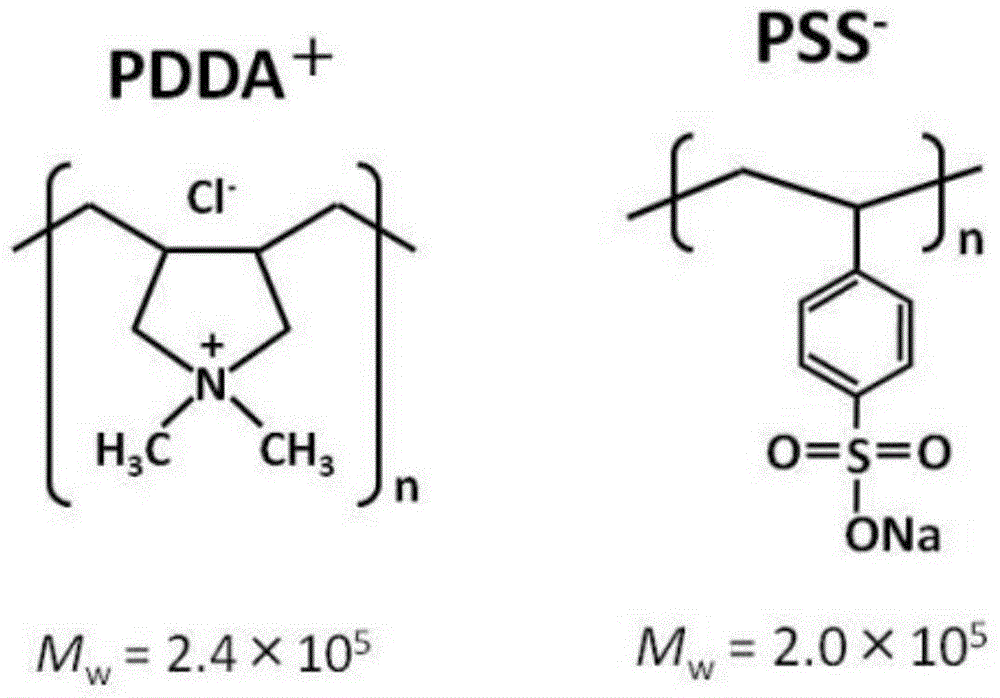Electrophoresis flowing type ELISA method based on polyelectrolyte multilayer (PEM) substrate
A flow-type, electrophoretic technology, used in instruments, measuring devices, scientific instruments, etc., to achieve the effect of shortening the reaction time
- Summary
- Abstract
- Description
- Claims
- Application Information
AI Technical Summary
Problems solved by technology
Method used
Image
Examples
Embodiment 1
[0020] CA Porous Membrane Substrate Electrophoresis ELISA
[0021] 1) Configuration of the solution:
[0022] a) Configuration of 50mM Tris-HCl 0.15MNaCl solution: Dissolve 1.15175g Tris-base solid in 125mL ultrapure water, take 0.84mL HCl and dissolve it in 100mL ultrapure water to obtain 0.1M HCl solution, after dissolving, add the HCl solution dropwise to Tris- Adjust the pH of the base solution to 7.4, set the volume to 250 mL, weigh 2.208 g of NaCl solid and add it to Tris-HCl.
[0023] b) Configuration of pH=7.4 concentration of 0.15M phosphate buffer (PB): weigh 10.74gNa 2 HPO 4 12H 2 Add O solid into 200mL ultrapure water, weigh 4.68gNaH 2 PO 4 2H 2 O solid was added into 200mL ultrapure water, and NaH 2 PO 4 solution added to Na 2 HPO 4 In the solution, adjust pH=7.4.
[0024] c) 0.05% Tween200.03MPB configuration: Take 250 μL Tween-20 and add it to 500 mL 0.03MPB buffer.
[0025] d) 2MH 2 SO 4 Configuration: take 8mL ultrapure water and add 1mL concentr...
Embodiment 2
[0032] 1. Preparation of PEMs modified CA porous membrane
[0033] 1) Prepare PDDA and PSS solution. Weigh 2mg each of PDDA and PSS solids, and dissolve them in 10mL of 50mM Tris-HCl0.15MNaClpH=7.4 solution to obtain PDDA and PSS concentrations of 0.2mg / mL.
[0034]
[0035] 2) Preparation of PEMs modified CA porous membrane. The CA membrane soaked in ultrapure water was put into PDDA solution, soaked for 2min at room temperature, and then washed with ultrapure water for 30s to remove the unadsorbed polyelectrolyte solution. Then put it into the PSS solution, soak it at room temperature for 2min, and then wash it with ultrapure water for 30s. The above PDDA and PSS are alternately performed to prepare 7 layers of positively charged self-assembled multilayer PEMs ((PDDA / PSS) 3 PDDA). 2. PEMs-CA porous membrane substrate electrophoresis ELISA
[0036] 1) with embodiment 1 step 1)
[0037] 2) Same as step 2) of Example 1, PEMs-CA replaces CA.
[0038] 3) Same as Step 3) ...
PUM
 Login to View More
Login to View More Abstract
Description
Claims
Application Information
 Login to View More
Login to View More - R&D
- Intellectual Property
- Life Sciences
- Materials
- Tech Scout
- Unparalleled Data Quality
- Higher Quality Content
- 60% Fewer Hallucinations
Browse by: Latest US Patents, China's latest patents, Technical Efficacy Thesaurus, Application Domain, Technology Topic, Popular Technical Reports.
© 2025 PatSnap. All rights reserved.Legal|Privacy policy|Modern Slavery Act Transparency Statement|Sitemap|About US| Contact US: help@patsnap.com



